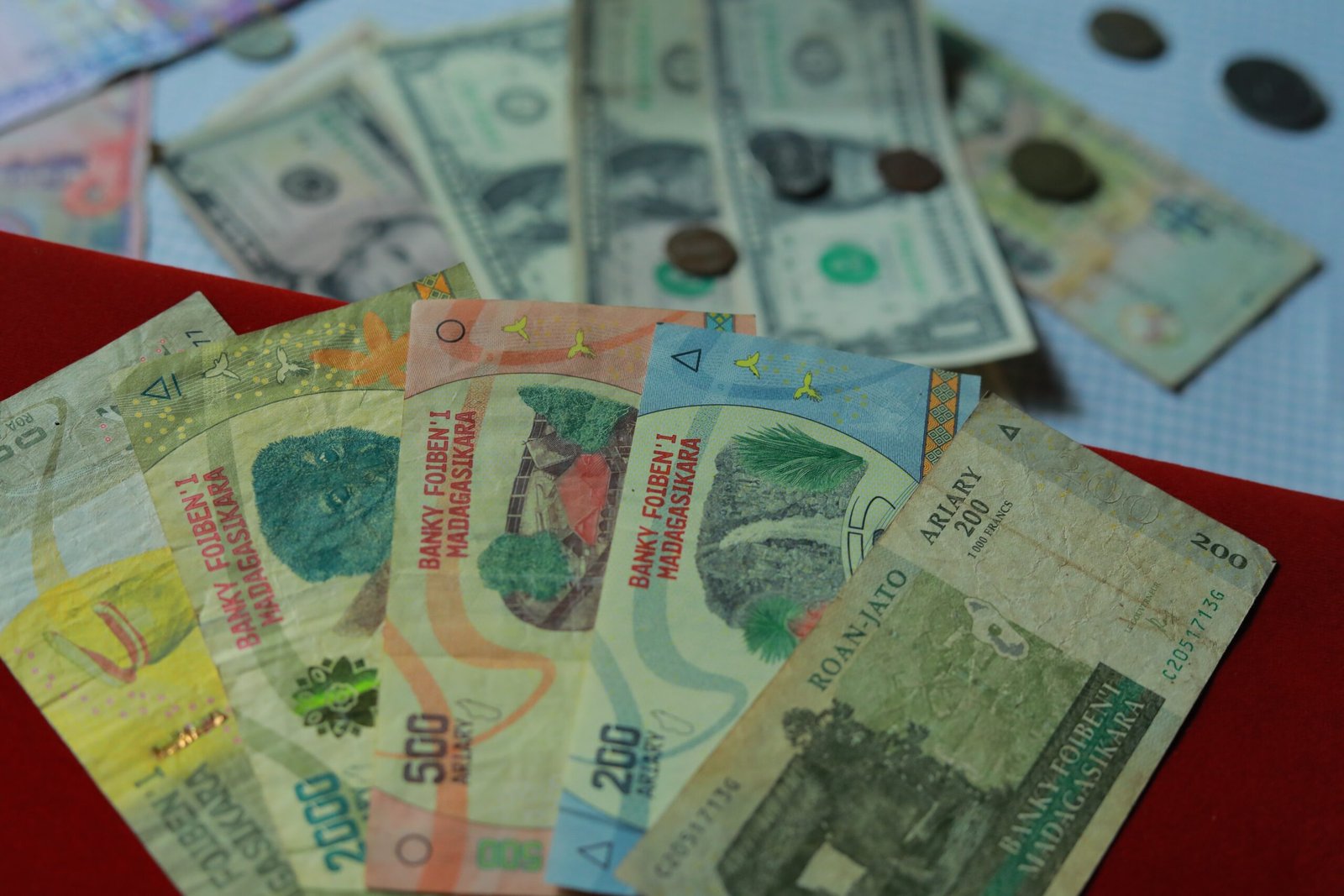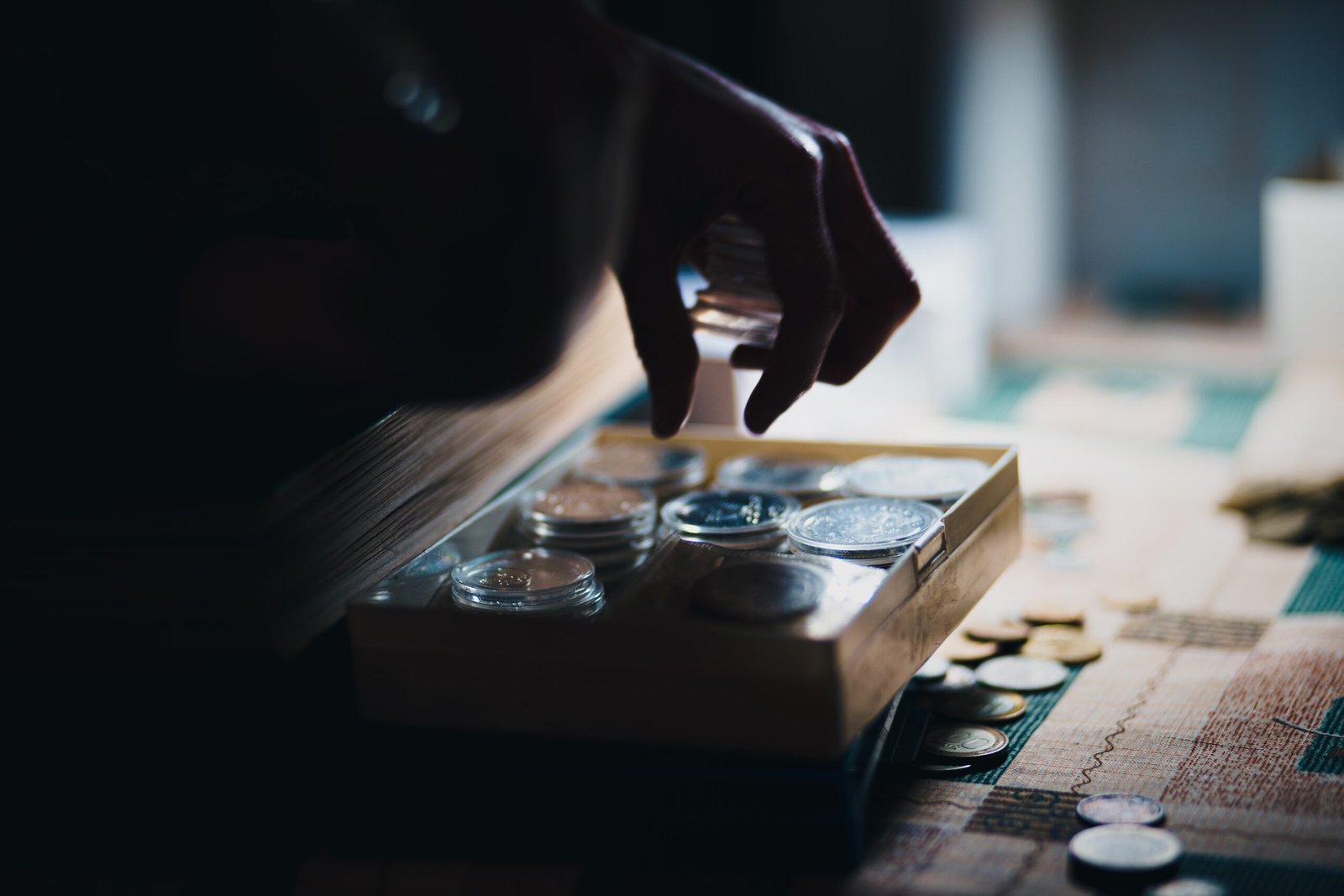The article titled “What Dimes Are Worth Money” explores the fascinating world of coin collecting, focusing specifically on dimes that hold significant value. From the iconic Liberty Seated Dimes to the revered Barber Dimes, this piece delves into the historical and monetary worth attached to these particular coins. By examining their condition, mintage numbers, and rarity, readers will gain insights into how to identify and evaluate valuable dimes, making it a compelling read for both seasoned numismatists and those new to the hobby.

Check Other Money Aesthetic Aricles
Rare Dimes
Introduction
Rare dimes hold a special place in the world of coin collecting. These coins not only possess historical significance but also have significant monetary value. In this comprehensive article, we will explore various categories of rare dimes, including Mercury dimes, Barber dimes, Seated Liberty dimes, silver dimes, error coins, collectible anniversary dimes, proof dimes, commemorative dimes, mint mark varieties, key date dimes, and condition grading. Each section will delve into the unique characteristics and value of these rare dimes, providing valuable insights for both collectors and investors.
Mercury Dimes
Mercury dimes, minted from 1916 to 1945, are highly sought after by collectors due to their exceptional design and historical importance. Named after the Roman god Mercury, these dimes feature a depiction of Liberty wearing a winged cap, symbolizing freedom of thought. The reverse side of the coin displays a fasces, a bundle of wooden rods bound together, symbolizing strength through unity. With its beautiful artwork and rich symbolism, Mercury dimes are prized by numismatists. The value of these dimes varies depending on factors such as condition, mint mark, and rarity.
Barber Dimes
In circulation from 1892 to 1916, Barber dimes continue to captivate the interest of coin enthusiasts. Designed by Charles E. Barber, these dimes showcase Lady Liberty wearing a Phrygian cap, symbolizing freedom and liberty. The reverse side of the coin displays an olive branch and a fasces, symbolizing peace and strength. Barber dimes are known for their stately appearance and traditional design. Their value is influenced by factors such as condition, mint mark, and scarcity, making them a coveted addition to any coin collection.
Seated Liberty Dimes
Seated Liberty dimes, minted from 1837 to 1891, represent an era of American history that saw significant growth and development. These dimes feature Lady Liberty seated on a rock, holding a shield and an olive branch, representing strength and peace. The reverse side of the coin displays a wreath and the denomination. Seated Liberty dimes possess both historical and numismatic significance, with their value influenced by factors such as condition, mint mark, and rarity. Collectors and investors alike seek out these dimes for their unique place in American coinage history.
Silver Dimes
Introduction
Silver dimes, made primarily of 90% silver and 10% copper, have long been treasured for their precious metal content and numismatic value. This section will explore the different types of silver dimes and provide insights into their significance and worth. From the popular Roosevelt dimes to the classic Winged Liberty Head dimes, the world of silver dimes offers a wide range of collecting opportunities for enthusiasts.
Roosevelt Dimes
First minted in 1946, Roosevelt dimes pay homage to President Franklin D. Roosevelt, who played a significant role in the nation’s history. These dimes feature a portrait of Roosevelt on the obverse side, while the reverse side displays an olive branch, torch, and oak branch, representing peace, liberty, and strength. Roosevelt dimes continued to be minted in silver until 1964 when the composition was changed to a copper-nickel clad. The value of silver Roosevelt dimes varies depending on their condition, rarity, and year of minting.
Winged Liberty Head Dimes
Commonly known as “Mercury” dimes due to a resemblance between the goddess on the coin and the Roman god Mercury, Winged Liberty Head dimes were minted from 1916 to 1945. These dimes are beloved for their intricate design and numismatic significance. The obverse side features a winged Liberty with a small cap, while the reverse side displays a fasces. Winged Liberty Head dimes made of silver are highly prized by collectors, with their value determined by factors such as condition, mint mark, and rarity.
Canadian Silver Dimes
Beyond the borders of the United States, Canadian silver dimes also hold a place of value and interest among collectors. Featuring iconic symbols such as the voyageur and the maple leaf, Canadian silver dimes possess their own charm and historical significance. The value of Canadian silver dimes is influenced by factors such as condition, rarity, and demand in the market. Collectors looking to expand their collection beyond the U.S. borders often include Canadian silver dimes in their numismatic pursuits.
Silver Dime Values
Determining the value of silver dimes can be a complex process that involves analyzing multiple factors. Condition plays a significant role, with well-preserved, uncirculated dimes often commanding premium prices. Rarer years and mint marks also contribute to a dime’s value, as do any unique characteristics or errors. Numismatists and coin collectors utilize various resources, including price guides, coin grading services, and consultations with experts, to assess the value of their silver dimes accurately.
Check Other Money Aesthetic Aricles
Error Coins
Introduction
Error coins have always fascinated collectors due to their unusual and unintended variations. These coins result from manufacturing mistakes during the minting process, making them unique and highly sought after. In this section, we will explore some common types of error coins found in dimes, shedding light on their characteristics and potential value.
Off-Center Strikes
One of the most well-known types of error coins is the off-center strike. This occurs when the coin is not properly aligned with the striking dies, resulting in an off-center image. The extent of the misalignment can vary, with more significant offsets often attracting greater interest from collectors. Off-center strike dimes possess a certain allure due to their distinctive appearance, making them prized possessions in the numismatic world.
Multiple Strikes
Another intriguing type of error coin is the multiple strike dime. This error occurs when the coin undergoes multiple strikes from the dies, resulting in overlapping or partially obliterated images. The resulting effect can create fascinating visual patterns that differentiate multiple strike dimes from their regular counterparts. Collectors appreciate the uniqueness of these error coins, making them highly sought after and valuable.
Wrong Planchet Error
Occasionally, dimes can end up struck on the wrong planchet, which refers to the metal disc used to produce the coin. This error occurs when a dime is mistakenly struck on a planchet intended for a different denomination or metal composition. Wrong planchet error coins have an inherent rarity and are highly collectible due to their uniqueness. The value of these error coins is often determined by factors such as the extent and visibility of the error, as well as the demand among collectors.
Doubled Dies
Doubled die errors occur when the coin’s design is partially or fully duplicated during the minting process. This phenomenon can create a distinctive doubling effect on certain parts of the coin, such as the date or the lettering. Collectors closely examine these doubled die error coins, as their unique appearance sets them apart from regular dimes. The scarcity and visual appeal of doubled dies contribute to their desirability among numismatists.
Collectible Anniversary Dimes
Introduction
Collectible anniversary dimes commemorate significant milestones in the history of coinage. These specially minted dimes pay tribute to historical events, influential figures, or iconic designs. In this section, we will explore three notable collectible anniversary dimes and shed light on their unique historical context and value.
First Roosevelt Dime
The first Roosevelt dime, minted in 1946, holds a special place in the hearts of collectors. Created to honor the memory of President Franklin D. Roosevelt, this dime features his profile on the obverse side, while the reverse side showcases an olive branch, a torch, and an oak branch. The first Roosevelt dime marked a shift in U.S. coinage, as it replaced the iconic Winged Liberty Head dime. Collectors prize these anniversary dimes for their historical significance and often seek out well-preserved examples to add to their collections.
50th Anniversary Roosevelt Dime
In 1996, the United States Mint celebrated the 50th anniversary of the Roosevelt dime with a special commemorative issue. This anniversary dime features a modified design, with the torch on the reverse side enhanced to display a more detailed and realistic flame. The 50th anniversary Roosevelt dime captures the attention of collectors with its unique design and limited mintage, making it a valuable addition to any numismatic collection.
2009 Roosevelt Dime
In 2009, the United States Mint embarked on an ambitious project commemorating various significant events and themes on the reverse side of the Roosevelt dime. This series of dimes commemorated the 200th anniversary of Abraham Lincoln’s birth, the 100th anniversary of the Lincoln penny, the 200th anniversary of Louis Braille’s birth, and the 150th anniversary of the birth of professional American Indian athlete Jim Thorpe. These anniversary dimes became popular among collectors, providing a diverse range of commemorative coins to celebrate important historical milestones.

Check Other Money Aesthetic Aricles
Proof Dimes
Introduction
Proof dimes represent the pinnacle of craftsmanship and artistry in the world of coinage. These coins undergo a specialized minting process, resulting in exquisite detail, mirror-like surfaces, and frosted designs. In this section, we will delve into the world of proof dimes, exploring their unique characteristics and the various series that have been produced over the years.
Proof Roosevelt Dimes
Proof Roosevelt dimes exhibit the iconic design of the regular-issue dimes but with enhanced aesthetic qualities. Produced using a specially polished die and planchet, these dimes feature sharp details, frosted design elements, and mirrored backgrounds. Proof Roosevelt dimes are highly sought after by collectors due to their exceptional quality and eye-catching appearance. The United States Mint continues to release annual Proof Sets containing a proof Roosevelt dime, allowing collectors to acquire these exquisite coins each year.
Proof Mercury Dimes
Mercury dimes, known for their outstanding design, have also been minted in proof form. These proof Mercury dimes showcase the same artistic beauty as their circulation counterparts but with enhanced detail and a mesmerizing finish. Collectors appreciate the opportunity to acquire proof Mercury dimes and admire the craftsmanship and artistry that went into creating these stunning coins.
Proof Barber Dimes
Barber dimes, with their elegant and classic design, have also been struck in proof format. Proof Barber dimes uphold the tradition and craftsmanship of their regular-issue counterparts but with added visual appeal. The detail and finishing of proof Barber dimes make them highly desirable among collectors, reflecting the beauty and artistry of this iconic dime series.
Commemorative Dimes
Introduction
Commemorative dimes offer a unique blend of history, artistry, and cultural significance. These coins are minted to honor specific people, events, or milestones, often attracting the attention of collectors and enthusiasts. In this section, we will explore three noteworthy commemorative dimes, highlighting their historical context and their place in the realm of numismatics.
California Diamond Jubilee
To celebrate the diamond jubilee of California’s statehood in 1925, a commemorative dime was produced. The California Diamond Jubilee dime features an image of a Spanish conquistador on one side, symbolizing the rich Spanish heritage of the state. On the reverse side, a miner is depicted, representing the gold rush that played a significant role in California’s history. These commemorative dimes pay homage to California’s unique past and are treasured by collectors who appreciate the historical significance of these coins.
Iowa Statehood
In 2003, the United States Mint released a commemorative dime to mark the 150th anniversary of Iowa’s statehood. This dime features a design representing Iowa’s agricultural heritage, with depictions of a farmer, a cow, and a cornstalk. Iowa Statehood commemorative dimes offer a charming tribute to the agricultural heartland and hold significant value for collectors interested in American history and culture.
Winston Churchill Dime
Released in 1991, the Winston Churchill dime commemorates the influential British Prime Minister who played a pivotal role during World War II. This commemorative dime features a portrait of Winston Churchill on the obverse side, while the reverse side showcases an image of Westminster Palace. The Winston Churchill dime serves as a unique testament to the enduring legacy of a visionary leader and attracts collectors with an interest in historical figures and international commemorative coins.

Mint Mark Varieties
Introduction
Mint mark varieties add an element of intrigue to coin collecting, as these small marks reveal the mint where the coin was produced. Mint marks help distinguish coins minted in different locations and can affect their desirability among collectors. In this section, we will explore some notable mint mark varieties in dimes, shedding light on their significance and appeal.
S Mint Mark
The S mint mark is associated with the United States Mint facility in San Francisco. Dimes bearing the S mint mark indicate that they were minted in San Francisco. These S mint mark dimes often carry a numismatic premium due to their limited production compared to those minted at other facilities. Collectors seek out these dimes as they represent a distinct chapter in U.S. coinage history and exemplify the craftsmanship of the San Francisco Mint.
D Mint Mark
Dimes bearing the D mint mark were produced at the United States Mint facility in Denver, Colorado. The presence of the D mint mark signifies that these dimes were minted in Denver. Like their S mint mark counterparts, D mint mark dimes are often prized by collectors for their limited availability. Collectors interested in acquiring a comprehensive collection of mint mark varieties often include D mint mark dimes in their numismatic pursuits.
O Mint Mark
The O mint mark represents the United States Mint facility in New Orleans, Louisiana. Dimes bearing the O mint mark indicate that they were minted in New Orleans. The New Orleans Mint played a significant role in U.S. coinage history, adding historical significance and collector appeal to O mint mark dimes. Collectors focused on building a diverse collection that encompasses different mint mark varieties often seek out O mint mark dimes to enrich their numismatic holdings.
CC Mint Mark
Dimes bearing the CC mint mark signify that they were minted at the Carson City Mint in Nevada. The Carson City Mint had a relatively short period of operation from 1870 to 1893 but left a lasting impact on numismatics. CC mint mark dimes are highly coveted by collectors due to their scarcity and historical importance. The inclusion of CC mint mark dimes in a collection adds a touch of old-west charm and tells a unique story of the American frontier.
Key Date Dimes
Introduction
Key dates in coin collecting refer to coins that are relatively scarce and difficult to find compared to other dates in a specific series. Key date dimes hold a special place in collections due to their rarity, historical significance, and increased value. In this section, we will explore three notable key date dimes, shedding light on their characteristics and desirability among collectors.
1916-D Mercury Dime
The 1916-D Mercury dime is a highly sought-after key date coin in the Mercury dime series. Produced in Denver, this dime has a lower mintage compared to other years in the series, making it more challenging to obtain. The 1916-D Mercury dime symbolizes the early years of the series and is treasured by collectors for its historical importance and scarcity. Its numismatic value can be substantial, particularly in well-preserved condition.
1895-O Barber Dime
The 1895-O Barber dime is considered one of the rarest coins in American numismatics. Minted in New Orleans, this dime has a remarkably low mintage, making it incredibly scarce and highly desirable among collectors. The 1895-O Barber dime exemplifies the challenges faced by collectors in acquiring a complete set of Barber dimes. Its rarity and historical significance contribute to its extraordinary value in the numismatic market.
1871-CC Seated Liberty Dime
The 1871-CC Seated Liberty dime is an elusive key date coin sought after by collectors. Minted in Carson City, Nevada, this dime carries the legacy of the Carson City Mint and the rich history of the American frontier. With a limited mintage, the 1871-CC Seated Liberty dime is scarce and highly coveted by collectors interested in assembling comprehensive collections of key date dimes. Its scarcity, combined with its historical context, contributes to its exceptional value.
Condition and Grading
Introduction
Condition and grading are crucial aspects of coin collecting, as they determine the value and desirability of a coin. Understanding the factors affecting value and the coin grading scale is essential for collectors and investors. In this section, we will delve into the world of condition and grading for dimes, providing insights into what collectors and investors should consider when assessing the quality and worth of their coins.
Factors Affecting Value
Several factors can significantly impact the value of dimes. The first factor to consider is the coin’s condition, with uncirculated or Mint State dimes generally commanding higher prices. Well-preserved coins with minimal wear and original luster are highly desirable among collectors. Rarer years and mint marks also contribute to a dime’s value, as they are more difficult to find and often sought after by collectors. Any unique characteristics, such as errors or varieties, can also enhance a dime’s value. The demand among collectors and investors in the market ultimately influences a dime’s overall value and price.
Coin Grading Scale
Coin grading is a standardized system used to assess the condition of coins and assign a grade that represents their quality. The most widely recognized coin grading scale is the Sheldon Coin Grading Scale, which ranges from 1 to 70, with 70 representing a perfect, flawless coin. The scale takes into account factors such as wear, luster, and the presence of any blemishes or damage. Each grade on the scale corresponds to a specific description, allowing collectors and investors to understand the condition of a coin at a glance. Grading services provided by professional grading companies can offer third-party opinions and authentication, providing additional confidence and credibility to the graded coin.
Mint State Dimes
Mint State dimes refer to coins that have never been in circulation and retain the same luster and detail as when they were minted. These dimes are often highly valued by collectors due to their pristine condition and original appearance. Mint State dimes are identified by specific grading levels on the coin grading scale, such as MS-60 (Uncirculated), MS-65 (Gem Uncirculated), or MS-70 (Perfect Uncirculated). Mint State dimes that possess historical or numismatic significance can fetch premium prices in the coin market.
Proof Dimes
Proof dimes, as discussed earlier, stand out for their exceptional quality and appearance. These coins undergo a specialized minting process that results in sharp details, frosted designs, and mirrored backgrounds. Proof dimes are often assigned high grades on the coin grading scale, indicating their superior quality. The quality of a proof dime is determined by factors such as the absence of blemishes, deep mirror fields, and crisp strikes. Collectors and investors appreciate the beauty and rarity of proof dimes, often including them in their numismatic portfolios.
Selling and Investing
Introduction
Selling or investing in rare dimes requires careful consideration of various factors to ensure a successful transaction and maximize returns. In this section, we will explore different avenues for selling rare dimes, including professional appraisal, coin dealers, and online marketplaces. Additionally, we will discuss the potential for investing in dimes and the key aspects to consider when making investment decisions.
Professional Appraisal
For collectors or investors looking to sell rare dimes, seeking a professional appraisal is a crucial first step. Professional appraisals provide an objective evaluation of the value and condition of the dimes, giving sellers a better understanding of what they have and how much it might be worth in the market. Appraisers consider factors such as the rarity, condition, demand, and historical context of the dimes to determine their fair market value. With a professional appraisal, sellers can confidently proceed with selling their rare dimes, ensuring a fair and informed transaction.
Coin Dealers
Coin dealers serve as valuable intermediaries for collectors and investors looking to sell their rare dimes. Established coin dealers have extensive knowledge and experience in the numismatic market, allowing them to provide accurate evaluations and fair offers. Coin dealers often have a network of interested buyers and can facilitate the selling process, ensuring a smooth transaction. Sellers should research reputable coin dealers, consider multiple offers, and negotiate based on the appraised value of their rare dimes.
Online Marketplaces
The advent of online marketplaces has revolutionized the buying and selling of rare coins, including dimes. Online platforms offer a wide reach and access to a global network of collectors, investors, and dealers. Sellers can list their rare dimes on well-established numismatic marketplaces and reach a larger audience. However, sellers should exercise caution and employ proper security measures when selling online to ensure a safe and successful transaction. Researching the platform’s reputation, utilizing secure payment methods, and accurately representing the condition and value of the dimes are essential when selling through online marketplaces.
Investing in Dimes
Investing in rare dimes can be an exciting and potentially lucrative endeavor. As with any investment, thorough research and understanding of the market are essential. Collectors and investors should analyze factors such as rarity, demand, historical significance, and condition when considering dimes for investment. Diversifying the investment portfolio with a mixture of different types of rare dimes, including key date dimes, silver dimes, and proofs, can mitigate risks and maximize potential returns. Additionally, consulting experts and utilizing reputable grading services can provide valuable insights into the potential long-term value of investment-grade dimes.
In conclusion, rare dimes offer a fascinating and rewarding avenue for collectors and investors alike. From the captivating design of the Mercury dimes to the historical significance of key date dimes, each category carries its own unique charm and value. The world of rare dimes offers a diverse range of options for those interested in numismatics, providing opportunities for historical exploration, artistic appreciation, and potential financial gains. By understanding the characteristics, grading, and market dynamics of rare dimes, collectors and investors can expand their knowledge and make informed decisions when acquiring, selling, or investing in these remarkable coins.











